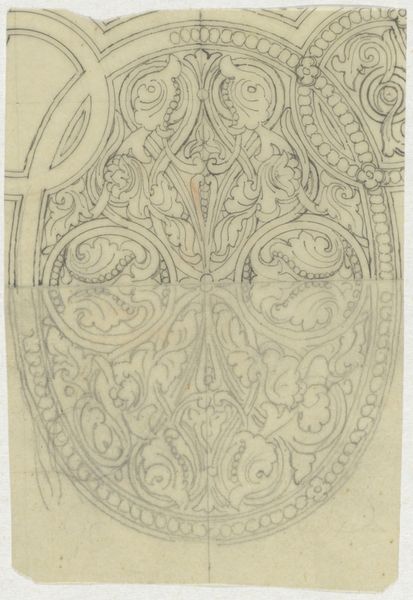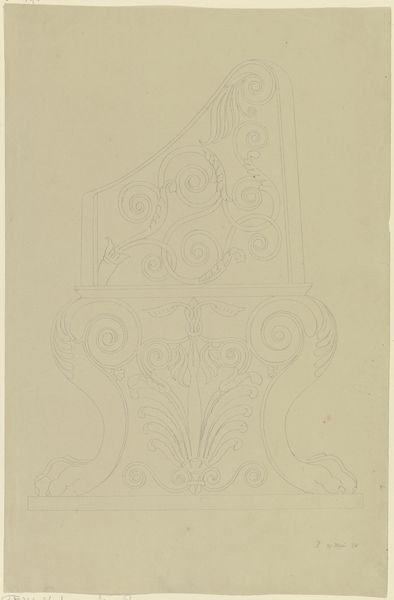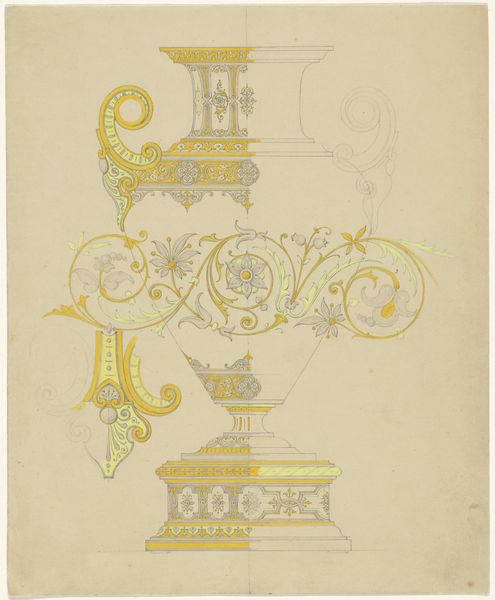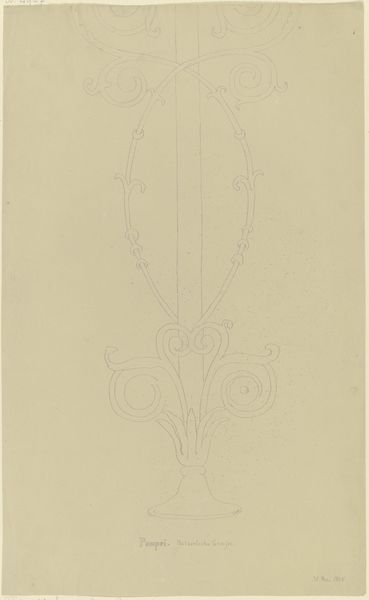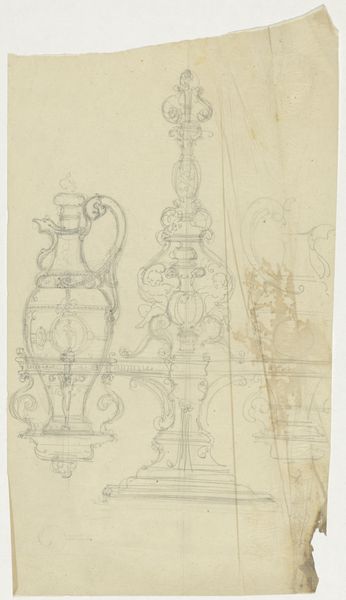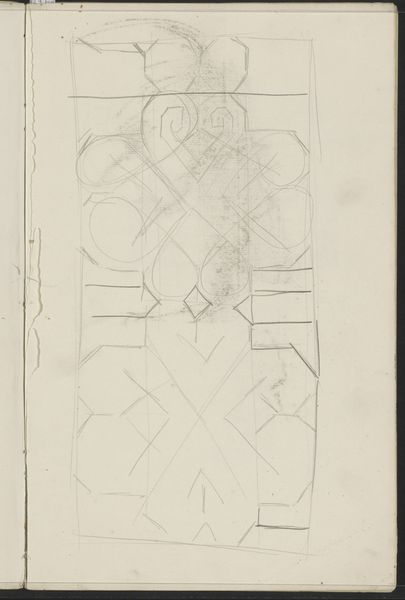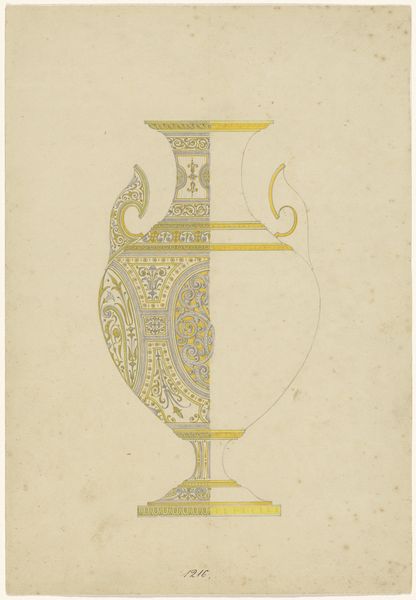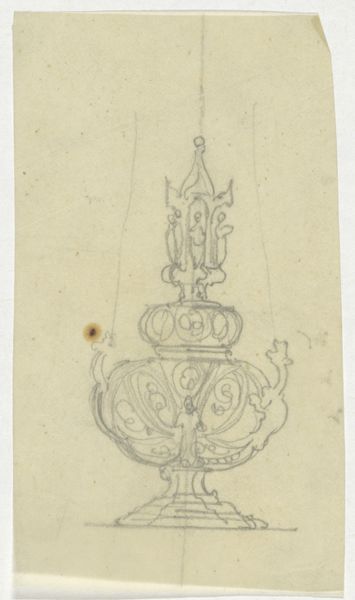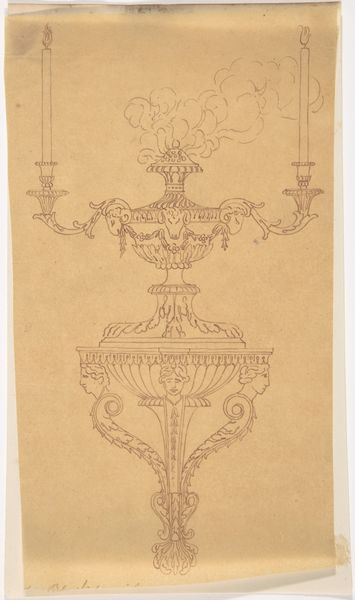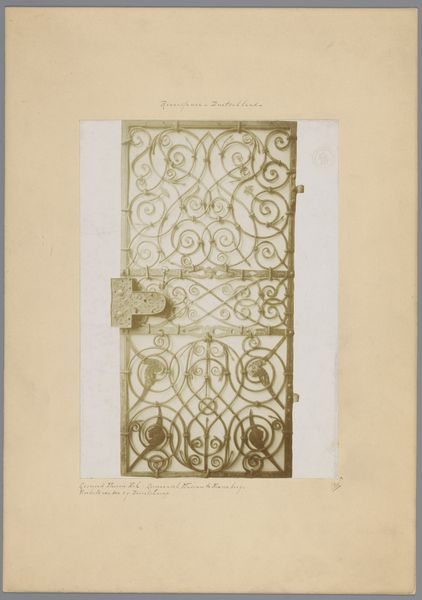
Gedamascineerd ijzeren vaas, waarvan alleen de linkerzijde geheel is ingevuld c. 1870 - 1880
0:00
0:00
drawing, paper, ink, pen
#
drawing
#
paper
#
ink
#
pen
#
decorative-art
Dimensions: height 243 mm, width 160 mm
Copyright: Rijks Museum: Open Domain
Editor: This is a pen and paper drawing from around the 1870s-1880s by Plácido Zuloaga. The artwork, titled "Gedamascineerd ijzeren vaas, waarvan alleen de linkerzijde geheel is ingevuld," which translates to "Damascened iron vase, of which only the left side is completely filled in," appears to be a study for a decorative vase. The drawing's incomplete nature makes me wonder about its purpose. What catches your eye when you look at it? Curator: The incompleteness is precisely what intrigues me. Zuloaga gives us a glimpse into the production process. Consider the time and skill required for damascening iron – layering different metals to create intricate patterns. This drawing reveals the artist's planning, the meticulous process of mapping out the design. Editor: So, you're seeing this drawing less as a finished piece and more as documentation of labor? Curator: Exactly! We often separate "high art" from "craft," but this piece blurs those lines. It compels us to think about the artisan's hand, the physical act of creation. Damascening was not just about aesthetics; it was about controlling materials, understanding their properties. Where was this iron sourced? Who were the labourers involved in its extraction and refinement? These questions help situate this vase drawing within a broader social and economic context. Editor: I never considered that. The focus was initially on the beauty of the pattern, but the raw materials were clearly important. Curator: Furthermore, the intended function matters. Is this a vase meant for display? For practical use? How would its purpose affect its design and production? The design suggests display in a domestic interior for a patron who would understand the time, labour and cultural heritage inlaid within the piece. Editor: That gives me a different appreciation. It’s interesting to see a piece not as a finished product, but as part of a much larger network of making and consumption. Curator: Precisely. Analyzing art through its material history expands our understanding of its cultural value.
Comments
No comments
Be the first to comment and join the conversation on the ultimate creative platform.
